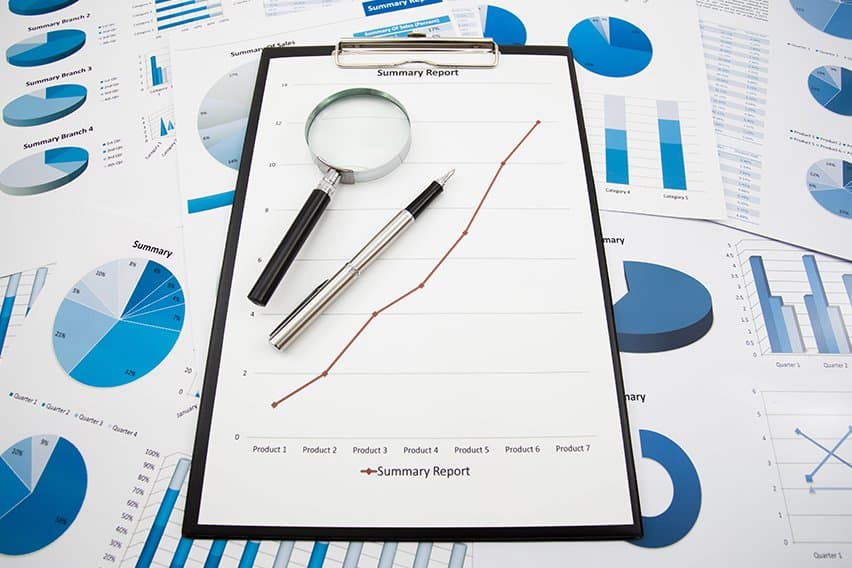
It is essential to evaluate the profitability of a company. This evaluation is done for several reasons. It can help a company determine if it should continue with its current production or scale back. There are many ways that this analysis can be accomplished. The most common way is by using a profitability index.
A profitability index will consider all aspects of an organization. Examples include capital expenditures, operating costs, taxes and interest, and more. It then inputs them into an equation. They will be weighted according to their importance. The result will then show how profitable the company has been over time.
This article will discuss the profitability index in greater detail. You'll learn what it is, how it's calculated, and much more.
What is the Profitability Index?
A profitability index is a single number. It can also be known as a profit investment ratio. It represents the overall effectiveness of an organization over a specific time period. It is often used in capital budgeting to determine if the initial investment is worthy or not. The calculation takes into consideration many factors that would affect the company's profits.
For example, taxes must be considered when determining a profitability index. There are several different types of taxes to consider. First, federal income taxes must be considered. This is the tax charged by the government on both individuals and corporations. Another type of tax that affects a profitability index is sales tax. These are charged to customers when products or services are bought.
A profitability index also takes into consideration many other factors. All of these are based on revenues and costs. These include things like transportation, sales commissions, production facilities, and more. There are also other aspects for calculating profits. These include net income from operations, operating margin, and corporate taxes.
In all, there are many factors to consider when calculating a profitability index. Each is equally as important as the next. A large increase in one area may cause a loss in another.
Why Do Businesses Use Profitability Index?
Profitability index is an effective tool for organizations. It aids them in making the most effective investment decisions. For example, the profitability index can be used to determine if a new product or service should be introduced into the market.
A company uses this calculation to determine if it's worth introducing the product. They usually use this calculation before or after the production stage. It takes into consideration all costs that may be incurred.
For example, a company might determine if their new line of clothing should be introduced. They would weigh all costs for each item they produce. If the expenses outweigh the potential revenue, then it's not worth it. The company would then decide to either lower the initial cost of production or scrap the idea altogether.
A profitability index calculation can be helpful after an investment has been made. If a company doesn't have good credit ratings or assets that could be sold, it might consider investing in other assets. These assets can then be sold for a profit if a company is in need of quick cash inflows. They will be able to quickly turn around and sell their investment when they need the extra capital.
In other cases, profitability index calculations are used after the production stage. In this case, they can determine how much money should be spent on advertising. It takes into consideration all expenses and will provide a figure for how much it's worth.
The best uses of the profitability index involve investments in new products or services. It allows companies to determine what works. It also helps to avoid spending on something that won't be profitable.
How Is Profitability Index Calculated?
A profitability index is calculated by dividing the net operating profit after taxes by the capital invested. It's largely based on annual cash flows or actual cash flow over a smaller period of time. The calculation for this is as follows:
Profitability Index = Net Operating Profit After Taxes / Capital Investment
For example, project A made $200,000 in net profits and has $20,000 invested in the original investment. To find the profitability index, divide 200,000 by 20,000 to determine the profitability.
Key Takeaways
A profitability index is a useful tool for companies to help make the best investment decisions. It gives a decent idea of potential profitability. It takes into consideration all factors that would affect profits. This includes taxes, future cash flow, and other expenses. These could be during production or before an investment is made. It helps determine the rate of return.
One of the main uses of the profitability index involves investments in new products or services. This calculation helps companies determine if they should invest their time and money. To calculate this, you divide net operating profit after taxes by capital invested. This gives a good idea of the business's ability to turn revenue into additional assets.
This article talks about the profitability index in depth. You learned what it is, how it's calculated, and much more. Hopefully, this helps you better understand this concept. Find more information on Resource Hub.












